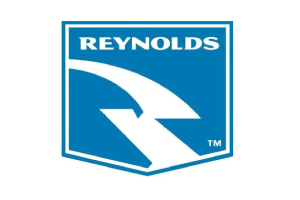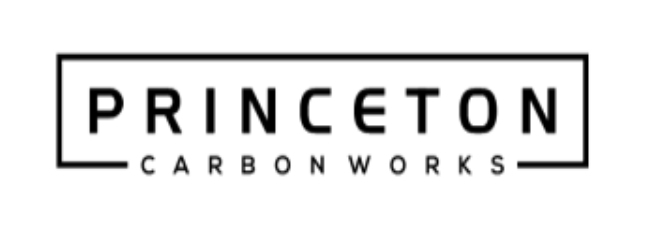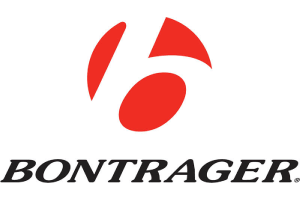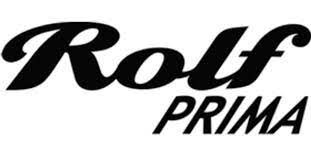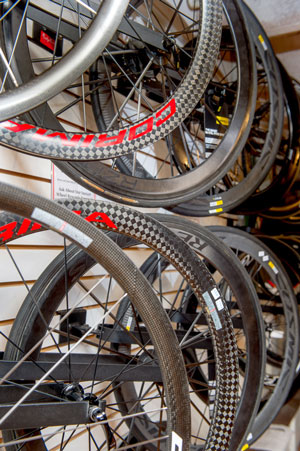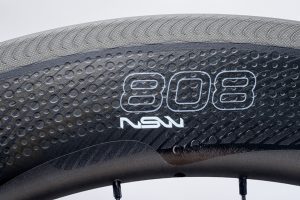In addition to building Rider Matched Custom Wheels in-house to meet your needs, Fit Werx offers a wide range of quality wheel brands to help your bike roll better than ever. Keep reading to learn more about some of the wheel brands we carry and things to keep in mind when selecting a new pair of wheels. Fit Werx has access to most wheel brands, so just let us know if you don’t see the wheel manufacturer or specific product you’re looking for.

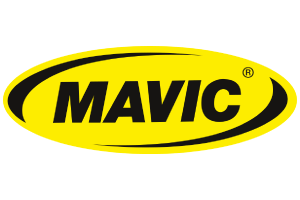

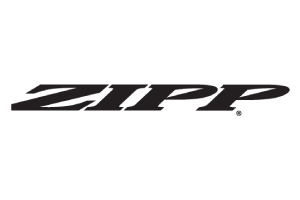
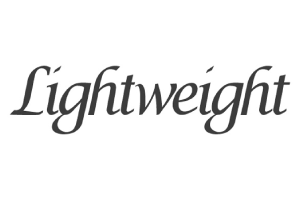
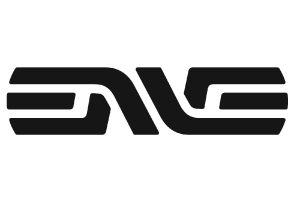
Outside of your frame, no single piece of equipment has a more dramatic effect on how your bike rides and performs than your wheels. Well-matched wheels can make a sluggish frame feel reasonably snappy, while poorly matched wheels can make even the nicest of frames feel anemic or harsh. Wheels are that important.
While some wheels work better for a wider range of riders than others, there are no universal wheels that we recommend for everyone. Wheels, like frames, are not commodities; if you want the best results, you need to select your wheels based on your individual needs, desired ride characteristics and what other equipment you will be using with them.
There are two primary types of wheels – carbon and aluminum. While there was a time when many carbon wheels were not designed to withstand the rigors of daily riding, that was quite some time ago. Most carbon fiber wheels today don’t need to be “special occasion” wheels and can be ridden as your primary wheels. Based upon this, for most riders, it is no longer so much about the material of the rim that they are considering. It is about which wheel “checks off” the most boxes on those variables that they value most.
With this in mind, what are those variables that you want to think about when selecting a wheel, and what are some of the wheels that serve each best?
Wheel Aerodynamics: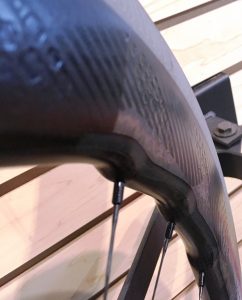
Considering you expend the majority of your energy riding a bike overcoming wind resistance, aerodynamics is an important variable to consider on a bike.
While the manageability of many deep wheels in cross-winds has improved a lot in recent years, it is important to remember that the deepest section rims or wheels with the most spoke surface area are frequently not the most versatile. Some of the latest rim shapes have helped allow deeper rims to handle more predictably across a wide range of conditions; however, in general, deeper rims will catch more wind than shallower designs. Lighter riders and/or those who ride at a more moderate pace tend to be more affected by wind than heavier and/or faster riders.
If you are a triathlete or TT rider aerodynamic benefit should rank high on your list and you need to figure out what depth and rim and spoke shape makes the most sense for you individually. We’re happy to talk to you and help you find the best options for your needs in this department, so don’t hesitate to contact us.
On the other hand, if you are a recreational rider, don’t discount the benefit of aerodynamics (riding faster and with less effort benefits everyone), but make sure the wheels your are considering offer you the right amount of versatility, lateral stiffness, comfort/compliance, etc. There are only a few riders who would find a 80mm deep section wheel the most versatile across a range of uses and conditions… Again, we’re happy to talk to you and help you find the best options for your individual needs, so don’t hesitate to contact us.
Almost every wheel brand makes aero wheels. Corima, ENVE, HED/Bontrager, Reynolds, Mavic and Zipp make aero wheels that commonly recommend. A discussion of the aero differences between these brands would take many pages and likely could never be exhaustive. Contact us if you have questions and want to know what we have seen in the shop, in the wind tunnel and with our extensive aero field testing data through the years.
Wheel Versatility:
“Versatility” refers to how many different riding conditions, rider types (weight, speed…), and terrain the wheel works well. Some wheels tend to be balanced and perform well for a wide range of riders while other wheel designs (often deeper designs) offer a more focused and specialty application. These specialty wheels often work ideally for a limited number of riders or course types, but have some limitations elsewhere. Aerodynamic carbon disc wheels, for example, can be exceptionally fast under the right rider on the right course, but can be less than ideal for a lighter or not as fast rider in windy or hilly conditions and thus would not be as versatile.
Most wheels that would be recommended for multi-purpose use will offer great versatility. Generally speaking, the biggest things that can limit versatility are rim depth (which can affect handling) and weight (which affects acceleration). However, other important variables that are vastly affected by the individual using the wheel include compliance/comfort and lateral stiffness/responsiveness. Like most everything regarding wheels, it is how all of these variables relates to your individual situation that determines what the best wheel options are for you.
When it comes to versatility, there are few aluminum rims that are deep enough to cause side wind issues, but some aluminum rim wheels can be heavy. With carbon, rims in the 30-60mm depth range (depending on rider and use) offer the most versatility. While there are exceptions, for many competitive triathletes looking to own one pair of race wheels, a 50-60mm depth rim in the front and a 60-80mm deep wheel in the back is an excellent place to focus. With today’s wide rim designs, these depths will offer a substantial aero benefit over a box style or shallower rim, most are light and laterally stiff and there are few conditions where they will not be one of the better wheels to be riding in terms of performance and handling.
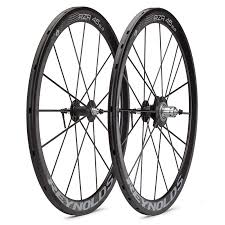 Wheel Weight:
Wheel Weight:
Weight’s primary effect on a wheel relates to acceleration. Simply put, heavier wheels (especially those with more perimeter weight at the rim) take more energy to accelerate and thus will frequently not sprint or climb as well as lighter wheels. A heavier wheel that is aerodynamic can still be a very fast wheel in conditions where there may not be a lot of climbing or a need for much acceleration (triathlon on flatter to rolling courses, for example). You want to look at weight from both an absolute standpoint (i.e. – “1200g a pair”) while also taking into account where the weight is distributed. Wheels with less external rotational mass accelerate better than those with heavier rotational rim mass.
Wheel weight can also be related to whether a wheel uses tubular tires or clincher tires. Tubular rims do not require the same hooked rim design found in a clincher and the smooth and low profile surface allows for less material and reinforcement to be used in rim construction. While many carbon rim wheels are available in both tubular and clincher versions, the tubular versions are usually lighter by 150-250 grams.
Make sure you do not choose a wheel based purely on weight, a wheel needs to score well in all the categories that are important to performance, ride quality and durability to work as desired. For example, if a wheel is light, but not laterally stiff enough for you, that is not a good compromise.
When it comes to weight, the lightest options are full carbon wheels like the Reynolds RZR and Lightweight’s offerings weigh under 1000g a pair while offering aero benefits and being some of the most laterally responsive and lowest mechanical resistance on the market! Truly uncompromising. In alloy, the lightest options start around 1300 grams a pair.
Contact us for recommendations and an estimate on a pair of custom built wheels or to talk about wheel weight and what production wheel systems make the most sense for you.
Tire Options and Clincher versus Tubular: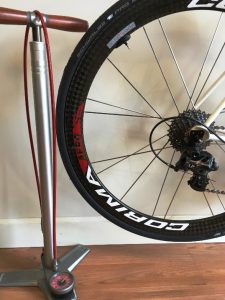
On a road wheels, tubular vs. clincher wheels are still worthy of discussion as each has its strengths and considerations. While tubular wheels still hold significant weight advantages over clinchers, the gap has closed and even switched sides on some other categories. For example, many newer clincher wheels will accept low rolling resistance and super smooth riding tubeless tires and some even test a bit better aerodynamically than their tubular counterparts. Meanwhile, tubulars are not nearly as hard to change as many people think and remain substantially lighter than clinchers. However, tubeless clinchers now give even the best tubulars a run for their money when it comes to ride quality. Clear as mud, right?
In the end, whether you go clincher or tubular comes down to preference, what variables you want to highlight, and your comfort and understanding of how each works and what the options are. Read on…
Wheel Braking Power and Modulation:
It is good to note that the preponderance of disc brake equipped bikes is making this variable less important by the day. If you want the best braking across all weather conditions, get a disc brake bike and the wheel you choose will not matter much at all. The brake rotor and pads you use will. On the other hand, if you are a rim brake aficionado, there are definite differences in braking performance across carbon rims in particular.
Many wheels below $1500 will have aluminum rims while the majority of wheels over $1500 will have carbon rims/braking surfaces. Outside of special brake enhancing applications like Mavic’s Exalith treatment and HED’s “Black” that can be found on some of the higher end aluminum rim wheels, the braking performance of most aluminum rims will be similar regardless of rim brand. However, unlike aluminum rims, carbon rims can have a wide range of braking performance depending on the construction of the braking track and the brake pads being used. When talking about braking performance, it is important that you use the brake pads recommended by the rim manufacturer if you want them to work as well as they can. A rim braking system on a carbon wheel is just that – a system.
If you are considering a carbon rim equipped wheel, consistency of modulation (how smooth and progressive the brake feels) and overall stopping power for your individual use are variables to consider. For example, a triathlete may not be overly concerned about brake modulation (as you may not be using your brakes that much) while a rider looking for a wheel to ride in the Alps or race criteriums would want to be concerned about modulation. While some carbon rims give up braking performance to an alloy rim, carbon rim braking technology by the most reputable brands has come a long way in recent years. Some of the latest carbon rim surfaces and brake pad combinations compete well with the performance of most aluminum rims, even in wet weather. Some of the carbon wheel braking performance leaders are wheels like Enve and Zipp wheels. Most Enve wheels have an advanced brake track while Zipp’s models that include the “Showstopper” brake track (mainly NSW models) also offer some of the strongest and most consistent carbon braking across weather conditions.
We’re happy to talk to you about specific pad and rim combinations and which brands will perform best in this category for your type of riding and weather. Call or email.
Wheel Lateral Stiffness: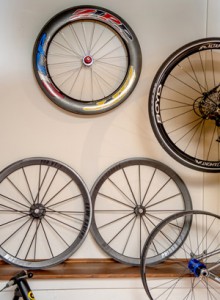
Often related to compliance and comfort, lateral stiffness is the amount of deflection between the rim and the hub under load. Too much deflection and the wheel will not transfer your power to the road as efficiently as it could and too much stiffness and it might have a tendency to skip or jump under load. Heavier or more powerful riders need a stiffer wheel than a lighter or lower power rider as they will put more leverage on the wheel under pedal load and thus deflect it more. On the other hand, lighter riders should be wary of getting wheels that ride too stiff or harsh for them.
When it comes to lateral stiffness on carbon wheels in particular, the depth and construction of the rims as well as the spoke configuration can matter a lot. There are brands (like Zipp) who offer some models that seem to be quite laterally stiff while other models lack the same “punch” in this regard. Other brands, like Corima and Mavic, tend to offer wheels that are laterally stiff across their range of products as the reinforced foam core rim construction naturally lends itself to lateral stiffness.
While the variables above also affect aluminum rim wheels, aluminum rims are often not as deep as carbon. Thus spoke configuration (quantity, lacing pattern, material, gauge…) and hub selection and design can play roles. As with carbon rims, there is a wide variety of stiffness profiles across brands and models. Wheels with high tensions and over-sized aluminum spokes, like Mavic’s Ksyrium Pro, tend to be on the stiffer side. For lighter riders or those riding punishing frames, wheels like HED’s Ardennes may make more sense.
If we don’t know of a production wheel that is optimal for you, or you just want something unique and matched to your, we can always build you a pair of rider matched wheels.
Wheel Compliance/Comfort:
Frequently the least compliant wheels are some of the most responsive and laterally stiff. This being said, modern material technology is overcoming this and some of today’s finest wheels are both comfortable and stiff. A wheel’s compliance should be well matched to the frame the rider is using; the more compliant and comfortable the frame, generally the the stiffer the wheel can be without punishing the rider. Wheel feel varies markedly in this regard between manufacturers and designs. For example, some of the most popular bladder mold carbon rims can transmit more vibration while a foam molded rim construction from a brand like Mavic or Corima may ride smoother and quieter while also enhancing lateral stiffness.
It is important to note that tire selection and pressure are major variables when it comes to wheel compliance and comfort. Latex tubes, high quality tires with a high thread count and supple sidewalls, tubeless tires, tire pressure, and tire and rim width, can make a really big difference when it comes to comfort.
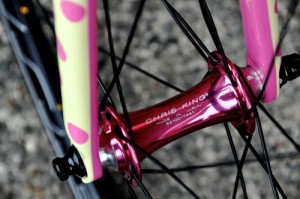 Bearing & Hub Quality on Bicycle Wheels:
Bearing & Hub Quality on Bicycle Wheels:
The bearing components (hardness and smoothness) in combination with the tolerances and alignment of the hubs matters when it comes to mechanical friction; mechanical friction matters when it comes to rolling speed and the amount of effort you have to put out to get and keep the bike rolling. The higher the grade of the bearing and the better the hub alignment and manufacturing tolerances, the smoother the wheel will roll.
It is important to note that one way friction in a hub can be kept as low a possible is to minimize the seal or the amount of grease in the bearing. A wheel can be rated highly for bearing quality, but may not offer as durable a bearing design as a hub that is sealed to a greater extent or uses a more durable grease. Hubs with minimal seals will often roll the best, but may also require more maintenance and bearing replacement to keep them that way.
Durability/Serviceability/Warranty:
We often receive questions about how carbon compares to aluminum when it comes to durability for bicycle rims. Quality, engineered carbon rims are more durable than ever and often offer the same rim strength as an alloy rim. There is a difference in how aluminum and carbon rim fail. In the event of a failure/trauma, an alloy rim will tend to dent, while carbon rims tends to crack. Regardless, the net result is similar – a rim that needs replacing.
There are differences between brands when it comes to rim durability, hub service intervals and serviceability. The assurance that a wheel/rim has been tested to meet International engineering and safety standards is a big part of what you are getting when you buy a name brand wheel from an authorized dealer. In other words, if you are considering a cheap carbon wheel, think about where money was likely saved and what the consequences might be (catastrophic wheel failure is usually a very bad thing…).
Once you are working with high quality brands, a big variable in durability is application. You need a wheel that is well suited to your use and size. If you are 230 lbs and put out monster power, don’t ride on the lightest wheel options and expect them to hold up. Big, small or in-between, contact us to discuss what we’ve seen through the years and what makes sense for you as an individual.
When it comes to warranty, the standard warranty will be one to two years on most manufacturers, with the notable exception of Enve who offers a five year warranty. Regardless, a good dealer and a strong and stable manufacturer can play a big role in your long-term satisfaction with your new wheels. While most wheel manufacturers offer a solid warranty and no-fault/crash replacement – a good dealer will have a close relationship with the manufacturer and can serve as your best ally and advocate in the case of an issue. In addition to accurate and individualized information, this is one big thing that we endeavor to offer our clients who buy through Fit Werx. In other words, choose where you buy as carefully as what you buy…
Wheel Graphics & Finish:
If you want the most refined and finished appearance that will be as durable as possible, you will want to think about how the graphics are applied to the wheel and how they appear. Decals tend not to last as long as sublimations and etchings. For example, most of Mavic’s current graphics should resist peeling better than their previous offerings.
Some brands offer custom decal colors to match bike graphics if adding a little flair is desired. Enve, Zipp, Corima and Derby, for example, offer standard decals as well as custom color graphics on their carbon rims.
While some brands have had strong rim finish for years, overall finish quality and consistency on the rim surface has improved markedly for many brands recently. Of course, only time will tell how permanent or temporary a graphic might be. Decals and more permanent etchings and sublimations both have their place.
Wheel Price & What is the Best Wheel for You?
Wheels matter, and they matter a lot; good wheels are worth the investment. With few exceptions, we usually suggest that if you are looking to spend under $1500 you should focus on aluminum wheelset. Most good carbon wheel options come into their own around $2K a pair, but Mavic and Reynolds in particular are now offering some carbon wheels in the $1500 range worth discussing. We haven’t seen much below that in carbon that we feel is worth the risks.
When it comes to comparing brands, models and prices, it can be hard to put a value on the price you pay for a wheel and the value you get. Wheels like the Reynolds’ RZR and Lightweight’s offerings can change how many riders think a bicycle can perform. However, at over $4K a pair price keeps many riders from even considering them. Does this mean that they don’t offer good value? Those who ride them would say no (life is too short to never try a pair of these). Likewise you may get great value for far less. The difference between a basic OEM wheel and a good $700 upgrade wheel is substantial. In other words, everything is relative. For this reason, we’re not going to try to further quantify how much price should factor into the equation for you.
Wheels are a complicated decision for many riders. We hope that this article helps you focus on what should matter most to you.
There are a lot of wheels on the market. Specific wheel recommendations should be based on your individual situation. Your weight, riding style, speed, use, frame and other components, budget and preferences can all play a role in what wheels we would recommend for you.
Stop-in, give us a call or email and we’ll help you find just the right wheel. We ship daily…
Some Associated Tech Articles on Wheels:



